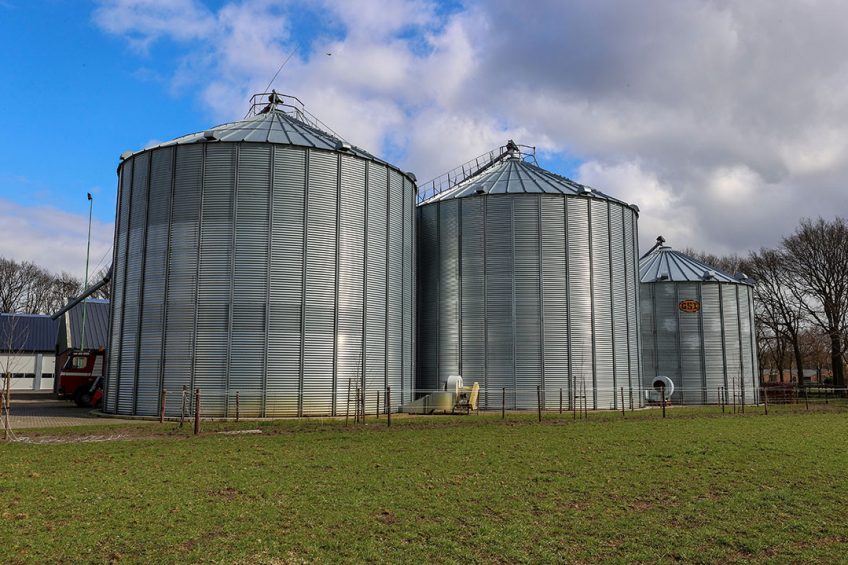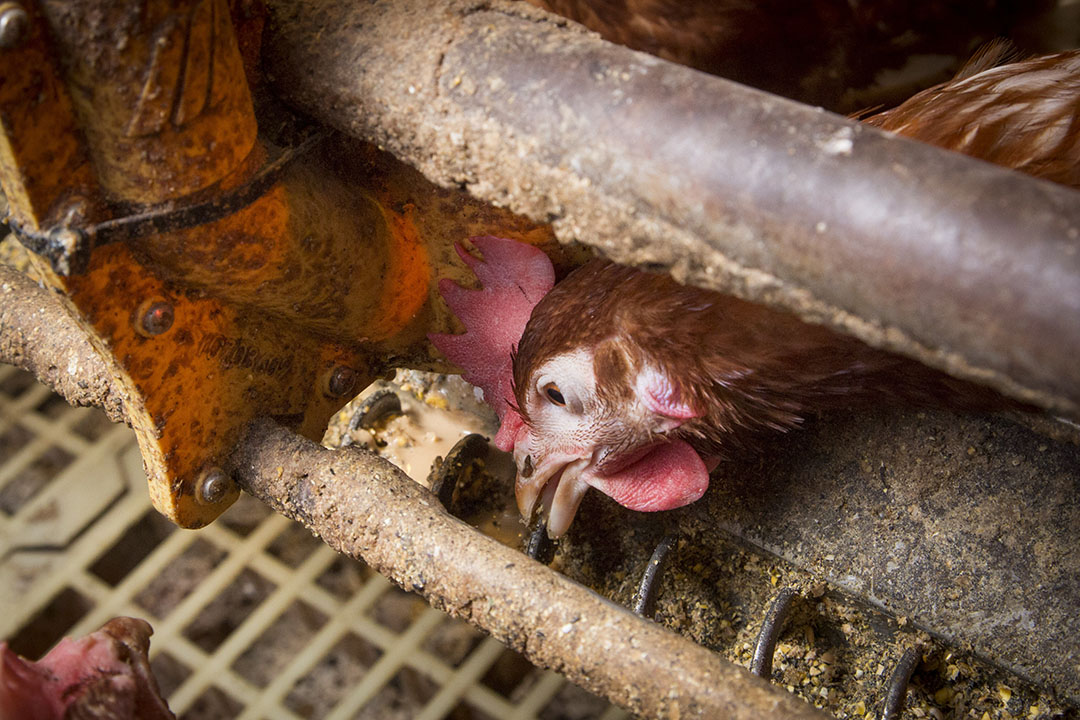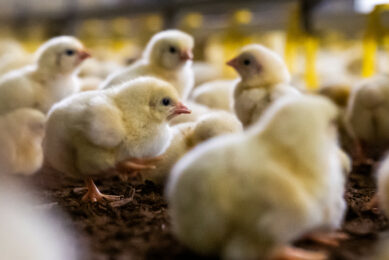Storage of poultry feeds: Points to consider

Storage may have detrimental effects on the quality of raw feed materials.The following is a review of the effects of storage on feed quality and ways of minimising such effects.
A study was conducted to examine the occurrence of insects, colour, weight loss, and nutrient composition in finisher feed for broilers stored under unfavourable conditions for 8 weeks. The results are shown in Table 1.
The colour change and weight loss at the 6th and 8th week could be attributed to the feeding activity and the increased number of insects that trigger enzymatic reactions causing such physical changes. The fat percentage also decreases over time, thus providing an energy level below that recommended for broiler chickens. The higher protein content at 6 and 8 weeks could be attributed to the presence of the larvae and adult insects observed in the feeds. The protein value in this case is, however, reduced due to the metabolic activity of the insects, thus creating a modified atmosphere with high CO2 and low O2 conditions which, through respiratory heating, could raise the inner temperature of stored feeds thus destroying inherent amino acids by Maillard reactions when stored for a long period.
In other studies, it was reported that carotene content and content of other carotenoid pigments decrease significantly due to ageing and storage with the consequent loss of vitamin A activity. Thiamine (B1) and vitamin E contents do not seem to be greatly diminished by several years of storage, especially when the feed is stored under favourable conditions.
Safe levels of moisture in stored feed
Table 2 shows the safe levels of moisture in different feed materials stored over 2 different periods. An excess amount of moisture will cause such feed to heat and, if not given prompt attention, they will become mouldy and thus unsuitable for feeding purposes. Whenever a feed material exceeds its permissible moisture level for safe storage, it should be dried down to this level before being placed in storage. For each percentage point of moisture which a grain contains over the permissible level, about a 2% reduction, or a little more, in the price of the grain is justified: 1.2% to cover the lower level of dry matter it contains, the rest to cover the cost of drying the grain down to an acceptable level.
Rancidity
Fats and oils present in the ground materials are primarily responsible for the development of rancidity. Oxidation of fats and oils (rancidity) is a natural reaction that occurs between unsaturated fatty acids and free oxygen. In this reaction, a peroxy radical is formed when the triglyceride free radical reacts with an oxygen molecule. The peroxy radical then reacts with another triglyceride, forming very unstable hydroperoxides, and breaks down to some secondary products such as aldehydes and alcohols, which contribute to the unpleasant flavours associated with rancid fats. These may also form other polymers that are unavailable and therefore lower the energy content of the fat and they are capable of destroying the fat-soluble vitamins contained in feeds (vitamin A, D, and E) and also cause the loss of carotenoid and xanthophyll pigments. The rancid feed may also lead to digestive upsets and thus reduced performance of chickens (Table 3).
Antioxidants, therefore, should be added to the product as soon after preparation as possible. Compounds such as ethoxyquin (1,2-dihydro-6-ethoxy-2,2,4- trimethyl quinoline), BHA (butylated hydroxyanisole), and BHT (butylated hydroxytoluene) are extremely effective antioxidants and can be used both efficiently and economically. Combinations of these antioxidants are normally found in commercially available products to take advantage of the different properties of each compound.

Ground versus unground feeds
Ground feeds will tolerate up to about 11% moisture under average conditions without mould forming during storage. Moisture levels in ground feed higher than the above will probably result in heating, caking, and/or mould during storage over an extended period. On the other hand, unground feed grains such as maize, whole oats, barley, and unprocessed grain sorghum will tolerate somewhat higher levels of moisture in storage without spoilage. Because of this, whole grains containing more than about 11.0% moisture should not be used in the production of ground mixtures to be held in storage for more than just a few days, especially during warm weather. Small grains such as barley, oats, and grain sorghum will tolerate up to about 13% moisture in storage, while shelled maize will tolerate up to about 15.5%.
Storage facilities
Proper storage of feed is an important factor in preserving the quality of feed and protecting it from damage by mould and other factors. Field studies in Egypt, for example, have revealed that on most farms feed is stacked under shelters where it is frequently subject to mould damage and invasion by rodents, wild birds, and/or insects. A microbial assay of feed at one farm revealed a mould value of 22,000 c.f.u./g, as opposed to the normal level of only 5,000 c.f.u. In this case, poor feed efficiency and reduced growth rates were encountered. Such problems could have been alleviated if the feed was stored in silos. Moneywise, it was estimated that the cost of a 20-tonne silo can be recovered in just three years as a result of savings of up to 16,000 Egyptian pounds per year (the value of the feed damaged under poor storage conditions).
Use of chemicals
Organic acids are the major compounds that have been used as chemical preservatives of high-moisture grain, with propionic and acetic acid or combinations of these being most favoured. Propionic acid is toxic to moulds and is used as a grain preservative at about 10 times the level that is theoretically necessary for the control of fungi. The level of organic acid required for satisfactory preservation of grain increases with the moisture content of the grain and the length of storage required. In general, the feeding value of acid-preserved grain is similar to that of dry grain.
References are available upon request.











